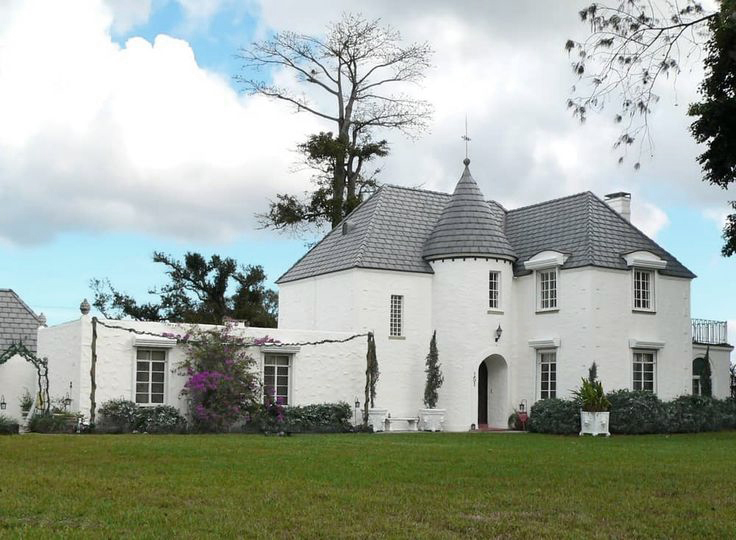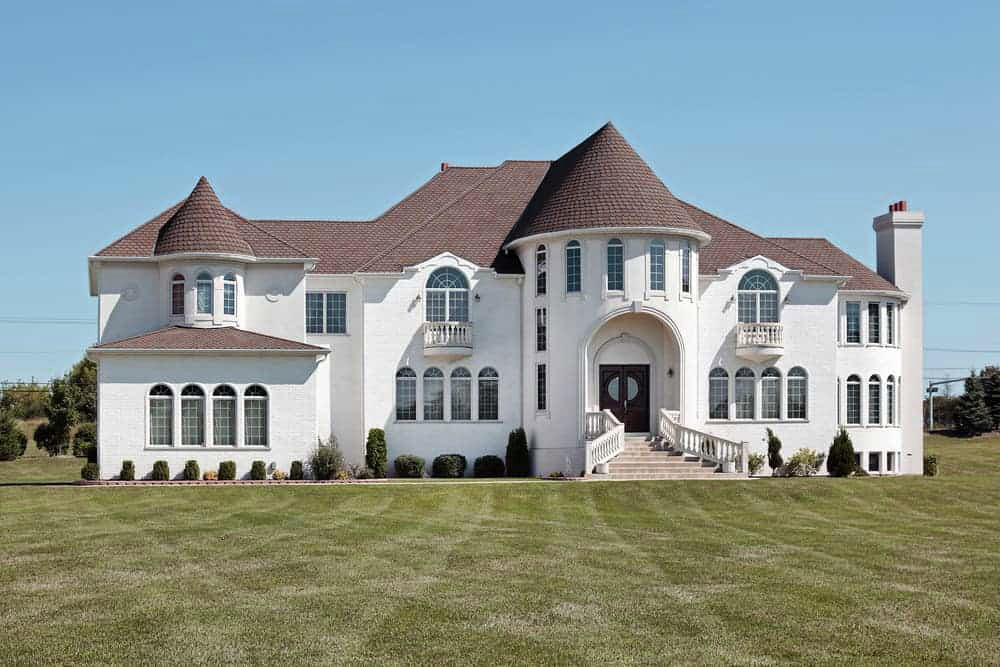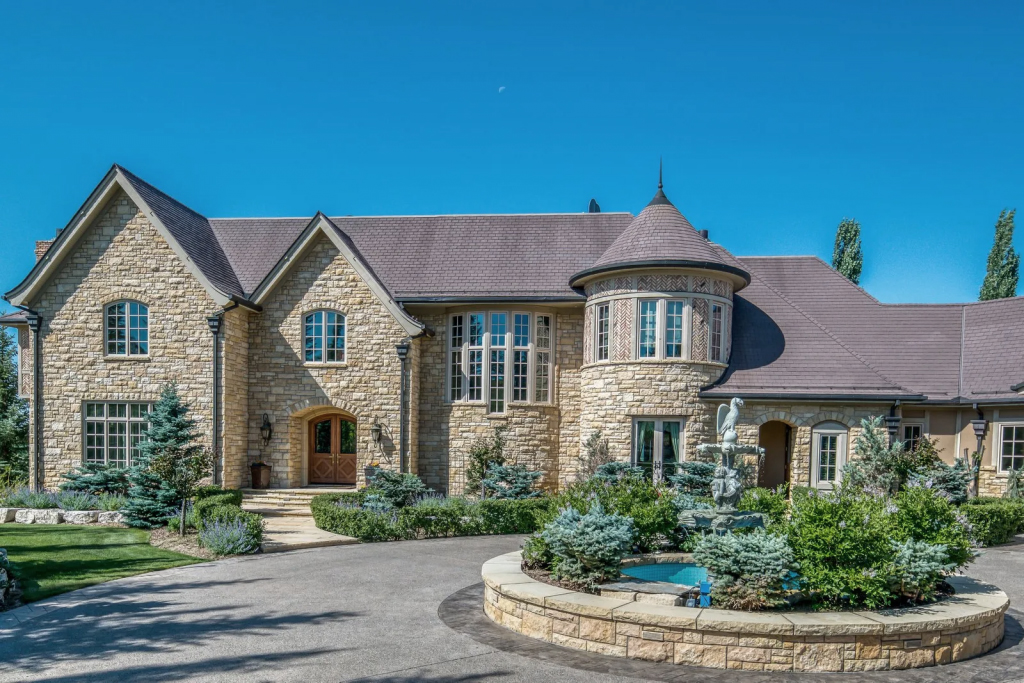Turrets have dazzled the human creative mind for a really long time. These notorious design elements can be tracked down on palaces, castles, chapels, and different structures everywhere. However, what precisely is a turret?
Definition of Turret Architecture
A turret is a small, projecting tower attached to a larger building. Turrets can be circular, polygonal, or square in shape, and they can vary in height and size. They are often topped with conical or onion-shaped roofs.
The Historical Significance
Turrets have a long and rich history, tracing all the way back to the old world. They were first utilized as guarded fortresses on palaces and other military designs. Turrets provided a vantage point for archers and slingers to fire at attackers. They also served as lookout towers, allowing defenders to spot approaching enemies.
Over time, turrets began to be used for more than just defense. They also became popular decorative features on residential and commercial buildings. Turrets added a touch of elegance and sophistication to any structure.

The Evolution of Turret Design
Turret design has evolved over the centuries, reflecting the changing needs and styles of architecture.
Historical Origins
The earliest known turrets were built in Mesopotamia and Egypt around 3000 BC. These early turrets were typically made of mud brick or stone and were used for defensive purposes.
Medieval Turrets
Medieval turrets were more elaborate than their ancient counterparts. They were often built with multiple floors and featured windows, doors, and balconies. Medieval turrets were used for both defense and decoration.
Renaissance Turrets
Renaissance turrets were characterized by their symmetry and classical proportions. They were often decorated with columns, arches, and other architectural elements. Renaissance turrets were often used to add a touch of grandeur to palaces and other grand buildings.
Victorian Era Turrets
Victorian era turrets were often whimsical and eclectic in design. They were frequently beautified with turrets of various shapes and sizes, as well as other engineering components like stained glass windows and created iron galleries.
Modern Turret Structures
Current turret structures are frequently made of steel and cement, and they can be tracked down on various structures, including high rises, places of business, and lodgings. Current turrets are frequently utilized for tasteful purposes, yet they can likewise fill practical needs, like lodging lifts or flights of stairs.
The Aesthetics of Turret Architecture
Turret architecture can be both ornate and minimalistic. Ornate turrets are often decorated with turrets of different shapes and sizes, as well as other architectural elements such as stained glass windows and wrought iron balconies. Minimalistic turrets are typically simple and unadorned.
Influences on Turret Aesthetics
The feel of turret engineering have been impacted by different variables, including the structural style of the period, the structure’s motivation, and the neighborhood culture.
For instance, archaic turrets were many times impacted by military engineering, while Renaissance turrets were affected by old style design.
Structural Elements
Turrets are normally made of block, stone, wood, or concrete. They can be indirect, polygonal, or square in shape, and they can vacillate in level and size.
Materials Used in Turret Construction
The materials used in turret construction vary depending on the period in which the turret was built and the local resources available.
Ancient turrets were typically made of mud brick or stone. Medieval turrets were often made of stone and brick, with wooden floors and roofs. Renaissance turrets were often made of stone and brick, with marble columns and other decorative elements. Victorian era turrets were often made of brick and wood, with stained glass windows and wrought iron balconies. Modern turret structures are often made of steel and concrete.
Turret Shapes and Sizes
Turrets can be various shapes and sizes. The most well-known turret shape is roundabout, however turrets can likewise be polygonal or square. Turrets can go in range from a couple of feet to a few hundred feet.
The shape and size of a turret is not set in stone by its motivation. Defensive turrets were typically large and circular, so that defenders could have a good view of the surrounding area. Decorative turrets, on the other hand, could be any shape or size.
Windows, Doors, and Balconies in Turrets
Turrets often have windows, doors, and balconies. Windows provide light and ventilation, while doors and balconies allow occupants to enter and exit the turret.
Functionality and Purpose
Turrets can serve a variety of functional and aesthetic purposes.
Residential Turrets
Private turrets can be utilized for various purposes, including:
- Giving additional room to rooms, washrooms, or other living regions.
- Adding a bit of style and refinement to a home.
- Creating a unique and private space for relaxation or study.
- Offering panoramic views of the surrounding area.
Defensive Turrets
Defensive turrets were used to protect buildings from attack. They provided a vantage point for archers and slingers to fire at attackers. They also served as lookout towers, allowing defenders to spot approaching enemies.
Turrets in Modern Architecture
Turrets are as yet utilized in present day design, yet they are ordinarily utilized for stylish purposes as opposed to cautious purposes. Current turret designs can be tracked down on different structures, including high rises, places of business, and lodgings.
Turrets in Iconic Buildings
Turrets are a prominent feature of many iconic buildings around the world, including:
- The Kremlin in Moscow, Russia
- The Taj Mahal in Agra, India
- The Neuschwanstein Palace in Bavaria, Germany
- The Château de Chambord in France
- The Buckingham Castle in London, Britain
Turret Architecture Around the World
Turret architecture can be found all over the world. Some of the most notable examples of turret architecture include:
European Turret Styles
- Norman turrets: Norman turrets are typically cylindrical or square in shape and have thick walls. They are often decorated with blind arches and other Norman architectural elements.
- Gothic turrets: Gothic turrets are typically tall and slender, and they are often decorated with flying buttresses, pinnacles, and other Gothic architectural elements.
- Renaissance turrets: Renaissance turrets are characterized by their symmetry and classical proportions. They are often decorated with columns, arches, and other classical architectural elements.
- Baroque turrets: Baroque turrets are often ornate and extravagant. They are frequently enlivened with sculptures, models, and other Florid engineering components.
- Neo-Gothic turrets: Neo-Gothic turrets were famous in the Victorian period. They are often decorated with flying buttresses, pinnacles, and other Gothic architectural elements.
Asian Turrets
- Chinese turrets: Chinese turrets are often colorful and decorated with dragons, phoenixes, and other Chinese motifs.
- Japanese turrets: Japanese turrets are often simple and elegant. They are often made of wood and have overhanging roofs.
- Indian turrets: Indian turrets are often elaborate and ornate. They are often decorated with carvings, sculptures, and other Indian architectural elements.
American Turrets
- Colonial turrets: Colonial turrets are typically simple and unadorned. They are often made of wood and have square or rectangular bases. They were frequently beautified with turrets of various shapes and sizes, as well as other engineering components like stained glass windows and created iron galleries.
- Present day turret structures: Current turret structures in America can be tracked down on various structures, including high rises, places of business, and lodgings.
African Turrets
- Moroccan turrets: Moroccan turrets are often colorful and decorated with intricate geometric patterns.
- Egyptian turrets: Egyptian turrets are often tall and slender, and they are often decorated with hieroglyphs and other Egyptian motifs.

Turret Architecture in Fiction
Turrets have for quite some time been a famous subject of fiction. Turrets are much of the time highlighted in fantasies, dream books, and computer games.
Turrets in Literature
Turrets are an unmistakable element in many works of writing, including:
- The Lord of the Rings by J.R.R. Tolkien
- A Song of Ice and Fire by George R.R. Martin
- The Chronicles of Narnia by C.S. Lewis
- Harry Potter by J.K. Rowling
Turrets in Movies and TV Shows
Turrets are also a popular sight in movies and TV shows, including:
- Frozen (2013)
- Tangled (2010)
- Beauty and the Beast (1991)
- Sleeping Beauty (1959)
- Game of Thrones (2011-2019)
Turrets in Video Games
Turrets are also a popular feature in video games, including:
- Portal (2007)
- Team Fortress 2 (2007)
- Age of Empires II (1999)
- Minecraft (2011)
- Halo (2001)
Contemporary Innovations
There have been a number of contemporary innovations in turret architecture.
Eco-Friendly Turret Designs
Architects are increasingly designing eco-friendly turrets. These turrets are made with feasible materials and integrate elements like sun powered chargers and green rooftops.
For instance, the Green Pinnacle in Taipei, Taiwan, is a 25-story working with a turret that is canvassed in sunlight powered chargers. The sunlight based chargers create sufficient power to drive the whole structure.
Smart Turret Technology
Smart turret technology is also being developed. Smart turrets can be equipped with sensors that can detect intruders and fire warning shots. Smart turrets can also be controlled remotely.
For instance, the Guard Pinnacle is a savvy turret that can be utilized to safeguard homes and organizations. The Guard Pinnacle is furnished with various sensors, including a movement sensor, an intensity sensor, and a night vision camera. The Guard Pinnacle can likewise be customized to send alarms to the proprietor’s cell phone assuming it distinguishes an interloper.
The Future of Turret Architecture
Turret architecture is constantly evolving. Architects are using new materials and technologies to design more sustainable and innovative turrets.
Later on, we might see turrets that are fueled by environmentally friendly power sources, for example, sun based and wind power. We may likewise see turrets that are outfitted with computerized reasoning, permitting them to learn and adjust to their current circumstance.
Turret Restoration and Preservation
Many historic turrets are in need of restoration and preservation. There are a number of organizations that are working to restore and preserve these historic structures.
The Importance of Preserving Turret Buildings
Turret structures are a significant piece of our social legacy. They give a brief look into the past and help us to remember the rich history of design.
Notable Turret Restoration Projects
Some notable turret restoration projects include:
- The restoration of the Neuschwanstein Castle in Bavaria, Germany
- The restoration of the Château de Chambord in France
- The restoration of the Buckingham Palace in London, England
Conclusion
Turret architecture is a fascinating and diverse subject. Turrets can be viewed as everywhere, and they have been utilized for different purposes throughout the long term.
Today, turret architecture is still evolving. Architects are using new materials and technologies to design more sustainable and innovative turrets.
The Timelessness of Turret Architecture
Turret architecture is timeless. Turrets have been around for a really long time, and they are as yet utilized in current design today. Turrets add a dash of style and complexity to any structure.
FAQS
What is Turret Architecture?
Turret architecture is a design element that features a small tower-like structure, typically on the corner of a building. Turrets serve both practical and aesthetic purposes, with origins in medieval and Gothic architecture.
What’s the Purpose of Turrets?
Turrets have various purposes. They can be purely decorative, adding character to a building. Functionally, they were once used for defensive purposes, offering an elevated vantage point for archers or lookouts. Today, they can serve as observation decks or even house staircases.
Are There Different Sorts of Turrets?
Without a doubt, there are various types of turrets, including pipe formed turrets, square turrets, and polygonal turrets.

